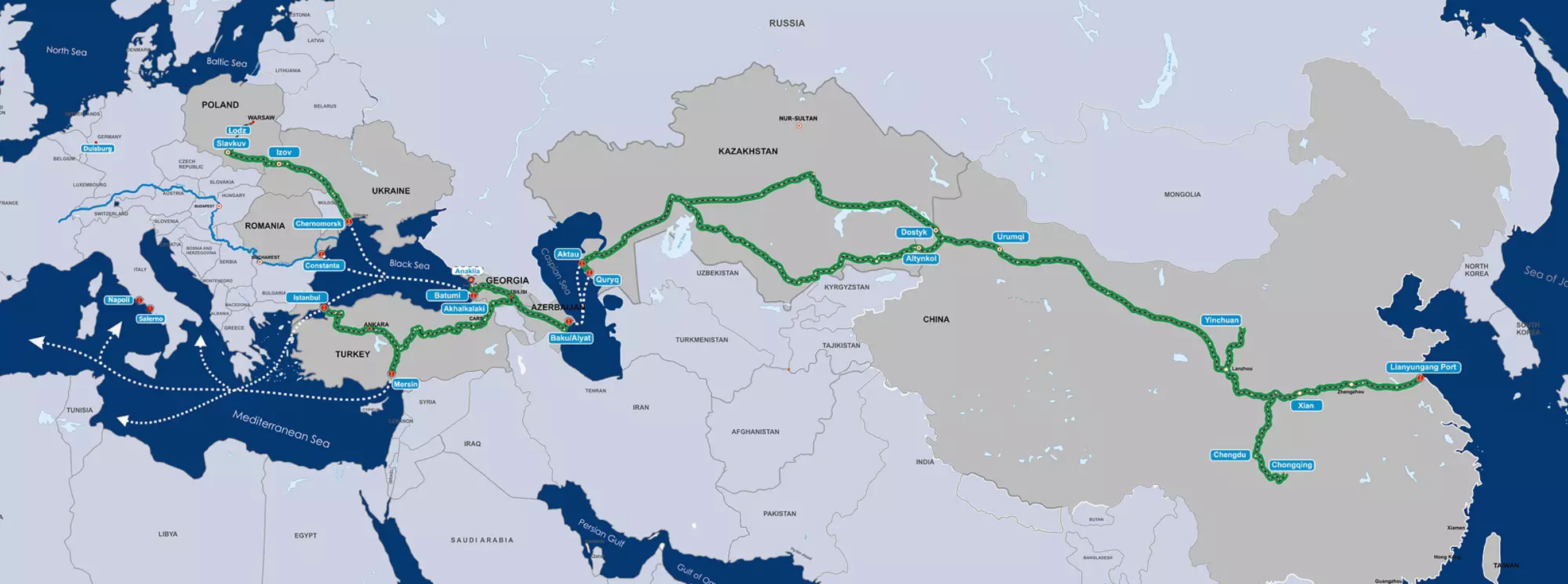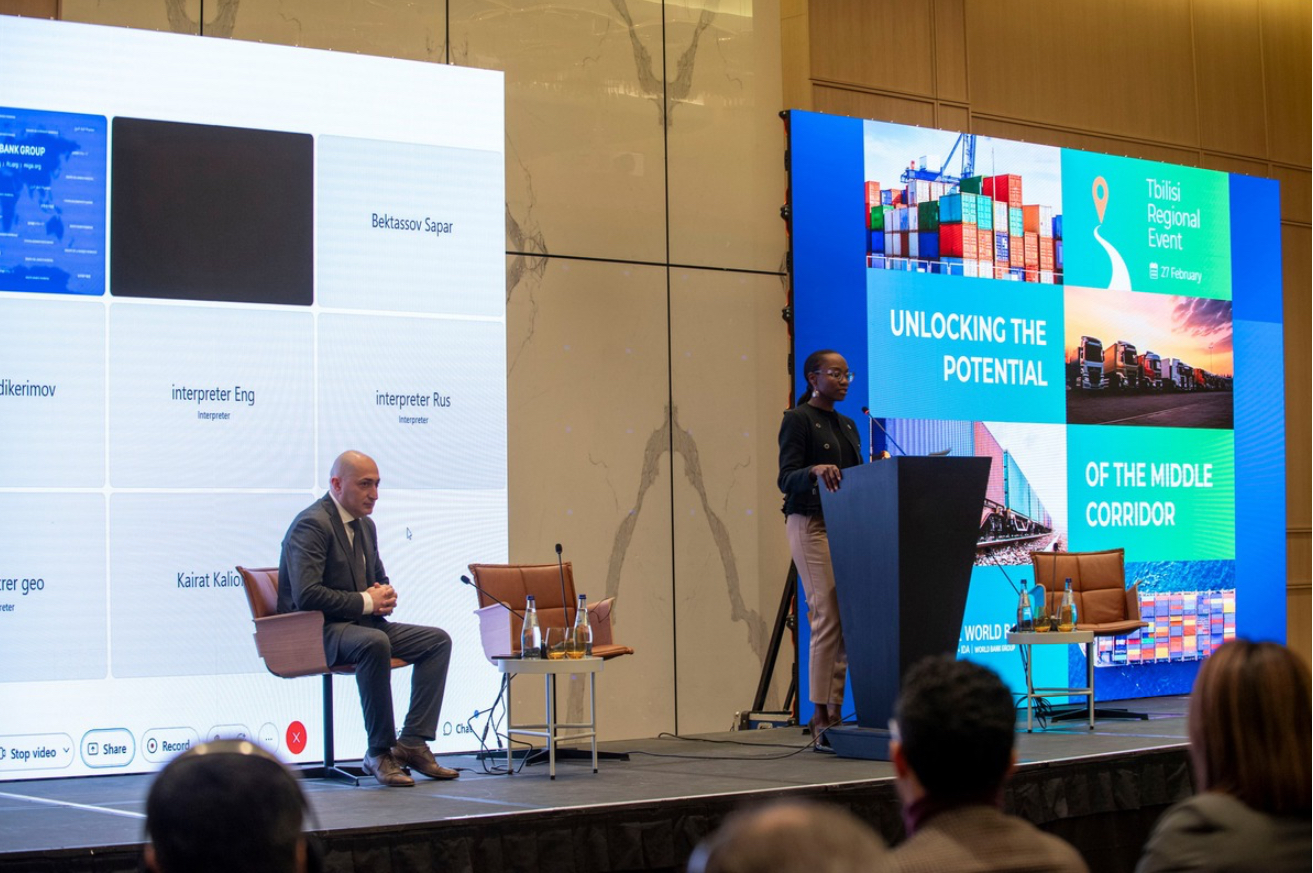March 2024 has proven to be a pivotal month for the Middle Corridor, a burgeoning trade route poised to revitalize global commerce amid geopolitical shifts and the quest for secure and efficient logistic pathways.

As security risks exacerbate vulnerabilities in traditional trade routes, notably incited by Houthi attacks in the Red Sea, the Middle Corridor is emerging as the modern Silk Road, connecting East and West with newfound vigor. Deemed ‘A Renaissance in Global Commerce,’ the Middle Corridor has galvanized attention from world powers and regional players, determined to establish a reliable commerce framework that promises to circumvent persistent bottlenecks.
”The importance of the middle corridor through Central Asia becomes absolutely central. We heard the speech of the High Representative of the European Union for Foreign Affairs, Borell, who said that today Central Asia is at the center of the world. In just five years, we see that the middle corridor has acquired key importance," Oybek Shaykhov, the Secretary General of EUROUZ shared during the Investor Forum in Brussels held on January 2024.
Over the past five years, the middle corridor has evolved into a key player, gaining strategic importance in the facilitation of efficient and cost-effective trade.
This month, Kazakhstan, a key stakeholder, resonated with optimism as the vice minister expressed confidence in achieving the ambitious loading plans set for the year. Such aspirations are underscored by a symphony of diplomatic engagements, including President Tokayev’s visit to Baku, epitomizing political willpower driving the corridor’s development. The encounter in Azerbaijan's capital signaled a paradigm shift, aligning regional aspirations with the infrastructure's expanding potential.
In a demonstration of its growing importance, the embassies of Azerbaijan, Georgia, and Kazakhstan, with support from the Dutch Entrepreneurs Association, convened a webinar in the Hague. The digital assembly spotlighted the project's ability to garner engaging diplomatic conversations, emphasizing the geopolitical import of this initiative. Pushed by these discussions, there's a burgeoning clamor in Europe calling for an acceleration of the corridor's operational capacity, acknowledging the pivotal role it will inevitably play in the continent's trade architecture.
March also heard whispers of a forthright technological leap: A digital platform for the corridor, earmarked to debut by 2024's end or early the next year. Such advancements are set to streamline the operational acumen of the corridor, ensuring the complex logistics are handled with deft precision.
The World Bank's study findings presented in Tbilisi further solidify this narrative, highlighting the corridor’s multifaceted economic impact beyond its transport potential. It resonates with the strategic nexus underscored by columnists, who link the corridor's prospects with the Organization of Turkic States, illuminating its pivotal international role.

Amidst this whirlwind of strategizing and anticipation, capacity expansion collaborations have been fortified between Azerbaijan and Kazakhstan. These developments not only forge stronger transit ties across the continents but also reflect a shared commitment to the corridor's longevity and success.
Rounding out the month with fervent support, Croatia's ambassador to the region commended the palpable progress of the Middle Corridor's development, marking it an invaluable asset to Eurasia's dynamic trading landscape.
The Middle Corridor constitutes a strategic transportation route linking Asia and Europe through the Caucasus region. Geographically spanning countries in the Caucasus, Central Asia, and Eastern Europe, its primary objective is to streamline trade, transportation, and economic cooperation among participating nations. The corridor is designed to connect ports in the Black Sea and Caspian Sea regions, providing a more direct and efficient pathway for the exchange of goods between the two continents.
Central to the development of the Middle Corridor is the enhancement of transportation infrastructure. Substantial investments are directed towards the construction and improvement of railways, roads, ports, and logistical facilities. This infrastructure development is crucial for bolstering connectivity and facilitating the seamless movement of goods along the corridor, thereby reducing transit times and costs.
The Middle Corridor holds economic promise, offering trade and investment opportunities for the countries involved. By providing a shorter and more cost-effective alternative to traditional trade routes like the Suez Canal, it enhances the competitiveness of the participating nations in the global market. Moreover, the corridor serves as a catalyst for economic growth, job creation, and regional development.
Numerous initiatives and projects have been initiated to propel the development and promotion of the Middle Corridor. These efforts encompass infrastructure development projects, trade agreements, and cooperation frameworks among participating countries. International cooperation is integral to the success of these endeavors, with governments, international organizations, and private sector entities collaborating to address logistical challenges and streamline customs procedures.
Strategically, the Middle Corridor holds significance for both the countries along its route and the broader geopolitical landscape. It strengthens connectivity between Asia and Europe, offering alternatives to traditional routes and reducing dependence on key chokepoints. Consequently, it provides countries with opportunities to diversify their trade and transportation networks, enhancing their resilience to geopolitical disruptions.
Follow Daryo's official Instagram and Twitter pages to keep current on world news.
Comments (0)